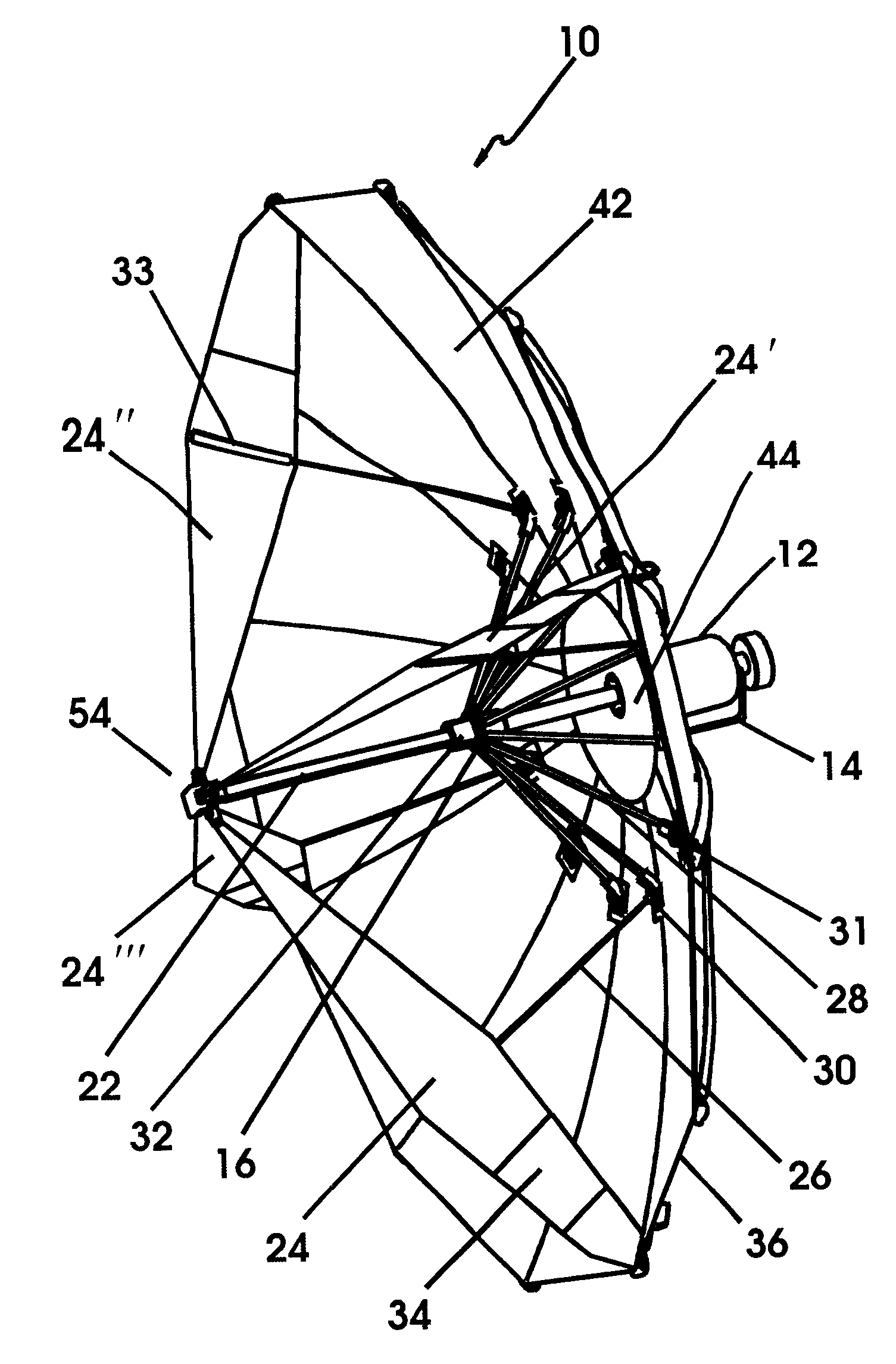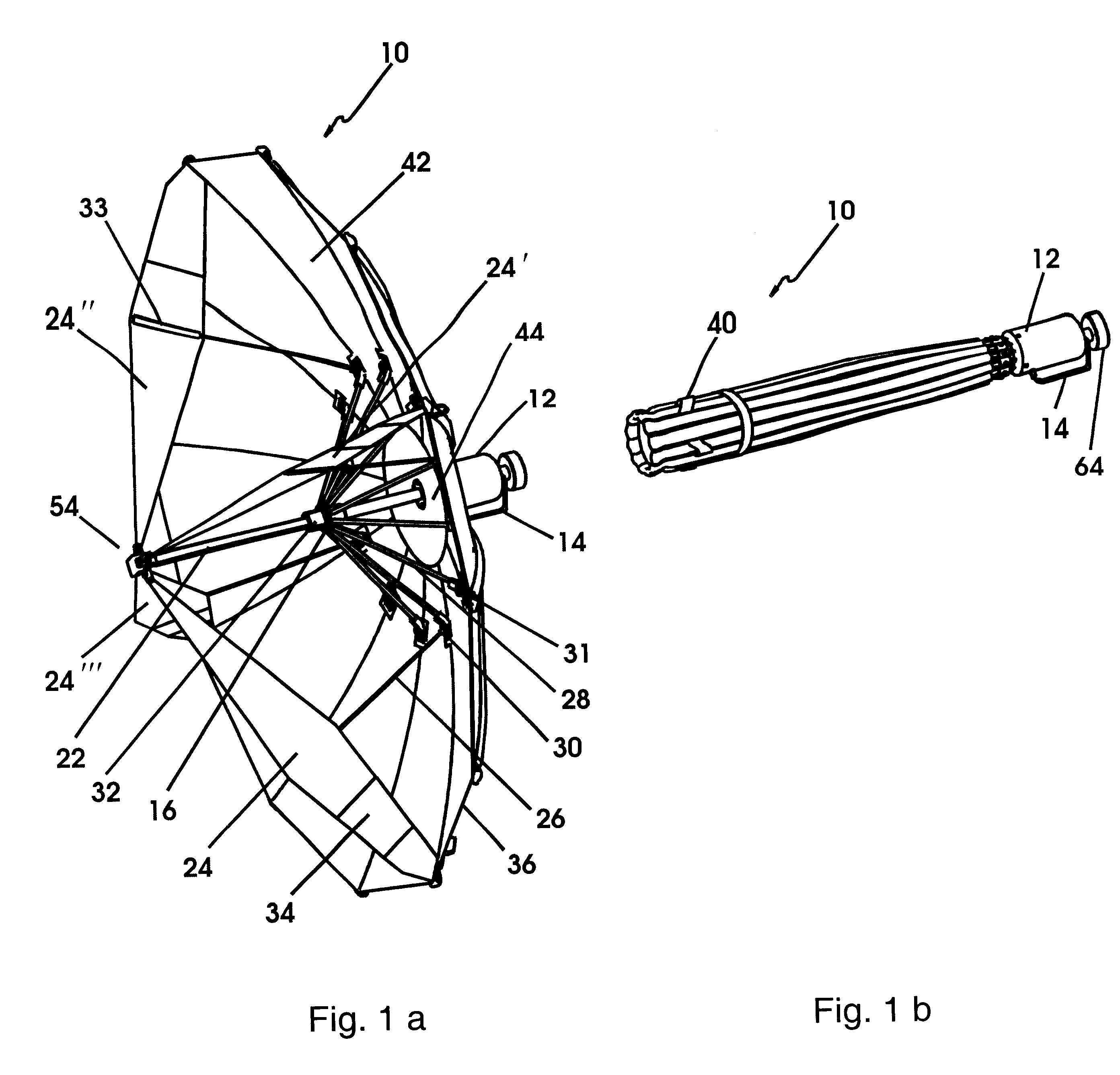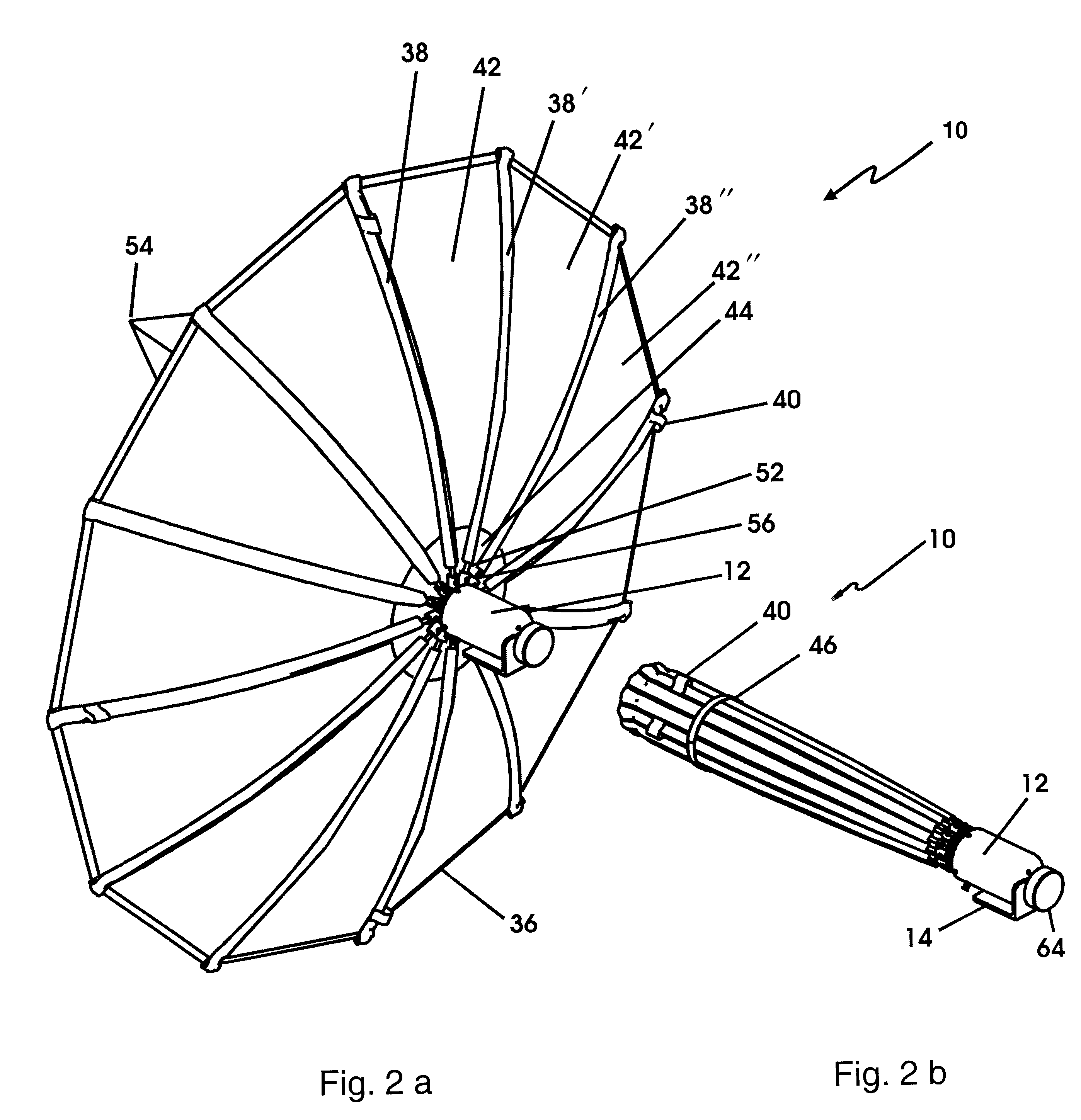Collapsible impulse radiating antenna
a radiating antenna, collapsible technology, applied in the direction of antennas, basic electric elements, electrical appliances, etc., can solve the problems of compromising the available gain, clumsy deployment and transportation, and the antenna described is not applicable for a large bandwidth or ultra-wide band use,
- Summary
- Abstract
- Description
- Claims
- Application Information
AI Technical Summary
Benefits of technology
Problems solved by technology
Method used
Image
Examples
second embodiment
Attention is returned to FIGS. 11-14 which provide further detail of the present invention which is a multifunction version of CIRA 10 described above, and is referred to herein as CMIRA 100. Reflector 102 of CMIRA 100 has an adjustable surface curvature and therefore has an adjustable beamwidth. It is to be understood that although two modes, focused and defocused, are discussed herein, CMIRA 100 can of course accommodate varying degrees of focus depending upon the degree of expansion of reflector 102 via expandable seams 106 discussed below. It is also to be understood that CMIRA 100 comprises the identical elements and operates in the identical fashion as CIRA 10 described above, but includes expandable seams in reflector 102 and feed arms 104. All alternative and equivalent elements described with regard to CIRA 10 are equally applicable to CMIRA 100. FIG. 11a shows CMIRA 100 in the deployed focused mode. When in the focused mode, reflector 102 of CMIRA 100 is a paraboloid and o...
example
Both the CIRA and CMIRA embodiments were tested using standard time domain antenna range techniques, and the results were converted to IEEE standard gain in the frequency domain. Two CIRA configurations were tested, an ultra-lightweight configuration having twelve triangular panels and a twenty-panel configuration. One CMIRA configuration was tested, having twenty panels, in both the focused and defocused modes.
Normalized Impulse Response
First, a review of the parameters used to describe antennas is provided. Antennas are described in the time domain with an impulse response, of the form h.sub.N (t). In transmission mode, the antenna radiates a field on boresight, E.sub.rad (t), which is described by equation (6.5) in E. G. Farr and C. E. Baum, Time Domain Characterization of Antennas with TEM Feed, Sensor and Simulation Note 426, October 1998, the content of which is incorporated herein by reference: ##EQU1##
where Z.sub.o is the impedance of free space, Z.sub.c is the impedance of ...
PUM
 Login to View More
Login to View More Abstract
Description
Claims
Application Information
 Login to View More
Login to View More - R&D
- Intellectual Property
- Life Sciences
- Materials
- Tech Scout
- Unparalleled Data Quality
- Higher Quality Content
- 60% Fewer Hallucinations
Browse by: Latest US Patents, China's latest patents, Technical Efficacy Thesaurus, Application Domain, Technology Topic, Popular Technical Reports.
© 2025 PatSnap. All rights reserved.Legal|Privacy policy|Modern Slavery Act Transparency Statement|Sitemap|About US| Contact US: help@patsnap.com



